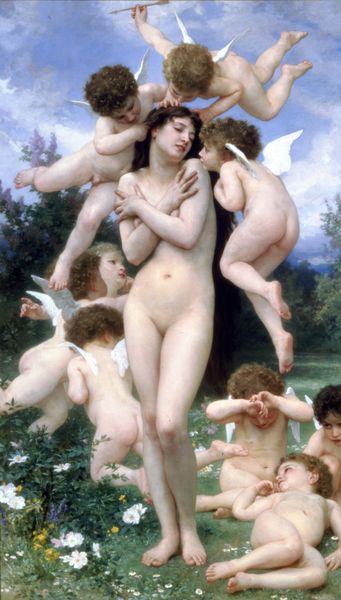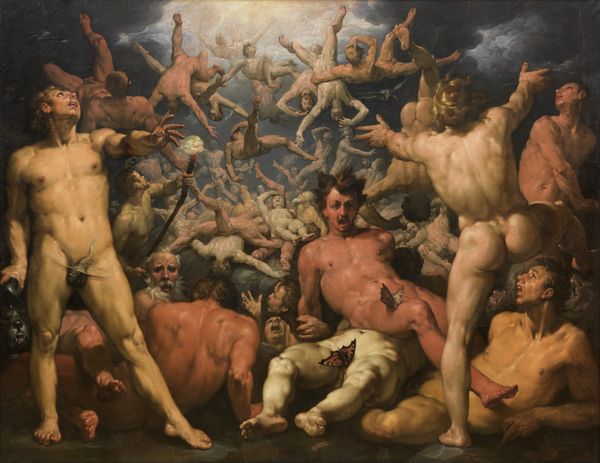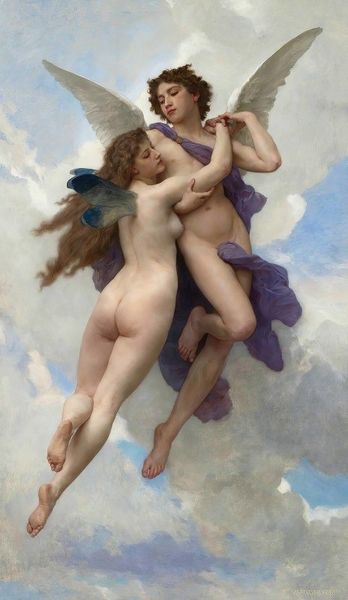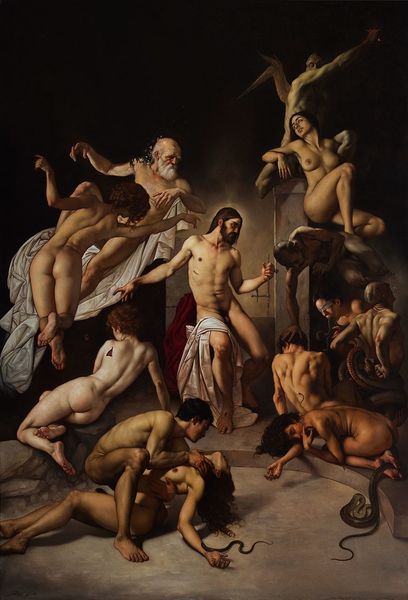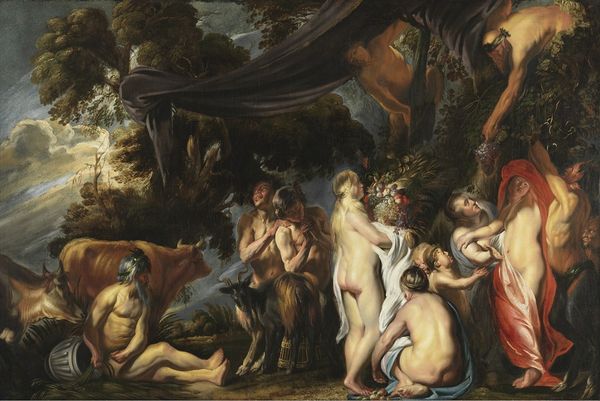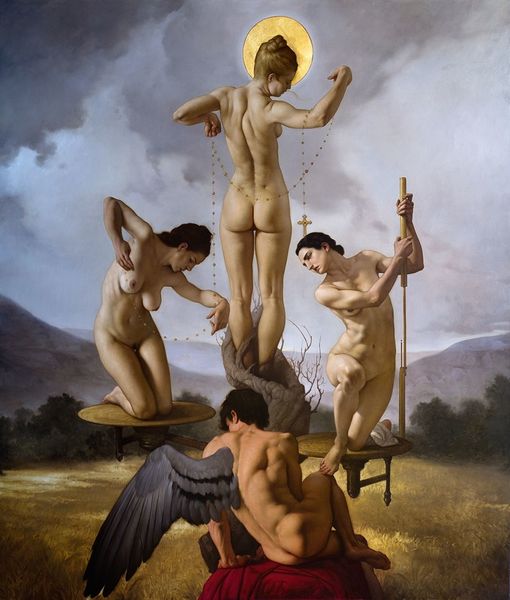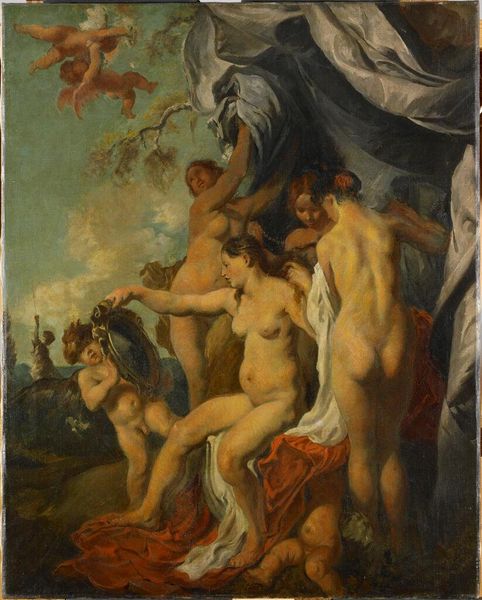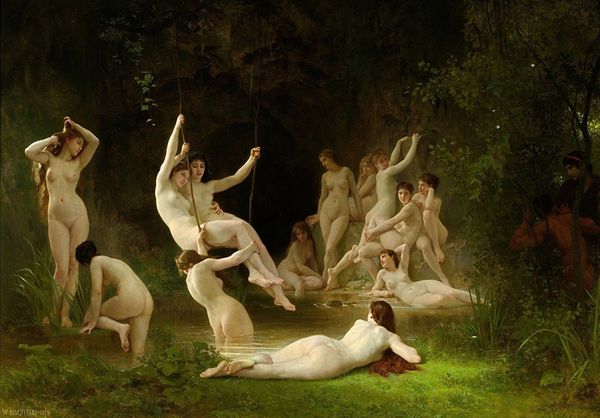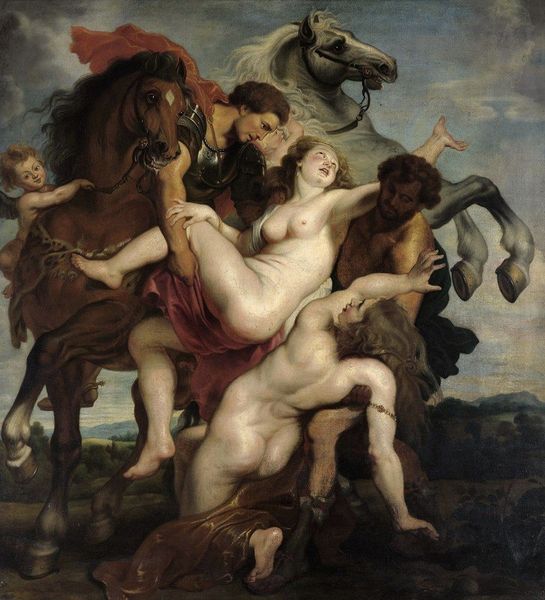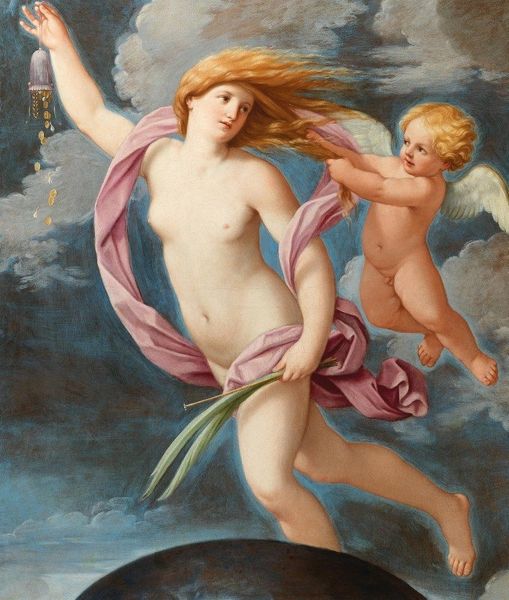
Dimensions: 145.5 x 118.2 cm
Copyright: Public domain
Editor: We’re looking at Luis Ricardo Falero’s "Witches Going to Their Sabbath," painted in 1878. It's quite a swirling scene of figures – I’m immediately struck by the contrast between the sensuality of the bodies and the grotesque imagery surrounding them. What is your perspective on this work? Curator: This piece really encapsulates the late 19th-century fascination with the occult and the changing role of women in society. Falero’s witches are presented in a way that’s both titillating and unsettling. Consider the historical context: how does the portrayal of these figures reflect anxieties around female power and societal norms of the time? Editor: It seems almost contradictory. On one hand, they're eroticized, almost like pin-ups, but they're also depicted participating in what was then considered evil and subversive activity. Curator: Exactly. That tension is key. Think about how these images would have been viewed in a society grappling with burgeoning feminist movements and challenging traditional religious doctrines. This painting can be interpreted as a commentary on those power dynamics, and the visual language through which women were represented. Does the depiction of nude bodies undermine or enhance a sense of liberty? Editor: That's a great point. I initially saw it as purely fantastical, but considering it in relation to the socio-political context makes it so much richer. The imagery can be both playful and subversive, a coded way to explore societal anxieties. Curator: Precisely. Understanding the societal pressures and the politics of imagery is essential for understanding art. The very act of displaying such a piece challenges academic tradition and represents another way of approaching erotic and ‘mystical’ subjects. It is a dance with darkness on the eve of modernity! Editor: Thank you. Now I see it less as a straightforward depiction and more as a complex visual argument. It's prompted me to dig more deeply into 19th century feminism, and learn more about how society portrayed female emancipation.
Comments
No comments
Be the first to comment and join the conversation on the ultimate creative platform.
